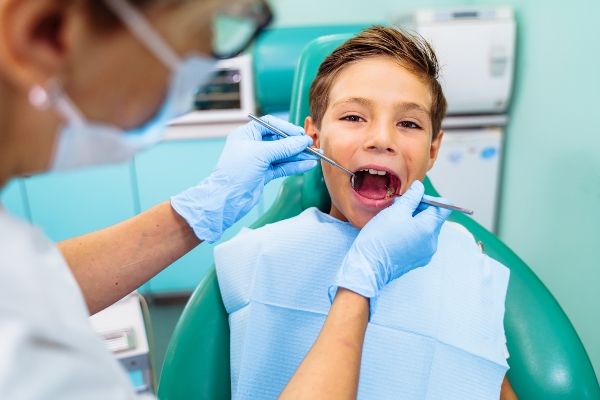When Should an Infant Frenectomy be Done?

An infant frenectomy is a minimally invasive surgical procedure that is done to remove one or both frena from the oral cavity. A frenum is a connective tissue membrane that connects surfaces of the oral cavity. The major frena include lingual (holds the tongue to the bottom of the mouth), labial or maxillary (connects the lips to the gum), and buccal frena (attaches the gums to the cheeks’ insides).
When to perform an infant frenectomy
An elongated or short thick lingual frenum limits tongue movement in babies and can make breastfeeding or sucking from a bottle more challenging. The condition is also described as a tongue-tie. If the anomaly is not corrected until the baby grows older, the child may experience difficulty with speech compared to their peers.
The condition may go undetected during routine checkups. Sometimes, it may only be discovered after the child reaches school age. Elongated frena in children may prevent normal extension of the tongue. In extreme situations, the child may find swallowing difficult and painful. Infant frenectomy can be performed quickly and with minimal discomfort within the first few weeks after birth.
If there is an issue like an extended maxillary labial frenum, the worry is often about the risk of orthodontic issues. The elongated labial frenum can inhibit normal growth and spacing of the two front upper teeth. Many parents typically worry about the aesthetic effects of the gap, thinking that it means getting braces. However, it is advisable to delay orthodontic treatment until the adult teeth erupt. If the gap remains despite deploying braces, then a labial frenectomy can be done to solve the abnormal spacing issue. Sometimes, the development of adult teeth makes the gap caused by the extended labial frenum close naturally.
The procedure
If the child is dealing with the side effects of a tongue- or lip-tie, the pediatric dental specialist will recommend a frenectomy as a permanent solution. The dental professional will examine the frenum or frena and decide whether to proceed with the procedure. Unless the frenum is interfering with the child’s feeding or speech, they will usually consider natural and non-invasive options first. If surgery is the best solution, it will be completed in the specialist’s office.
A lingual frenectomy entails detaching the tissue connecting the tongue and the floor of the mouth. The procedure is done to correct tongue-tie, or ankyloglossia. A maxillary frenectomy involves the removal of the tissue attaching the upper gums to the front teeth. This tissue can make it so that newborns cannot flare or curl out their lips, making it difficult to latch onto the breast while feeding.
The procedure usually takes about 10 to 15 minutes, and recovery might take around two weeks. The dentist will prescribe pain relief meds to alleviate soreness and pain around the surgery site. The dental professional will also explain the proper aftercare routine, including cleaning the area and preventing unnecessary tongue movement, to the parents before leaving the office.
Final note
The pediatric dental specialist may recommend infant frenectomy following an examination. To learn more about the procedure, contact the dental office to book an appointment.
Request an appointment here: https://www.hvkidsmiles.com or call Hudson Valley Pediatric Dentistry at (845) 363-4177 for an appointment in our Middletown office.
Check out what others are saying about our services on Yelp: Infant Frenectomy in Middletown, NY.
Recent Posts
A child dentist can help your child achieve better dental and general health. Regular visits allow your child to get used to dental checks, tools, and equipment. Dental fear disappears, and the young patient can continue having a bright, painless smile. Here are what parents like you should look forward to during child dentist appointments.Choosing…
Cavity treatment for kids is essential for a child’s oral health. Dental decay can cause discomfort, causing the child to lose focus at school. It can even result in low self-esteem and malnutrition. Treating cavities can improve your child’s general health. Here are effective techniques for cavity treatment for kids.There are cases when fillings cannot…
Parents play a crucial role in their children's tooth care by ensuring their children get started on the right path to optimal dental health. This involves overseeing children's tooth care at home while also helping them develop healthy dental habits and ensuring they see a pediatric dentist regularly.Parents will need to keep their child's mouth…
Just like adults, children need preventive dental care — that is where pediatric dentistry comes in. Many parents believe that their child's teeth are healthy simply because their child is young. The truth is that oral health issues are as prevalent in kids as much as adults. Since they love sugary treats, the risk of…


